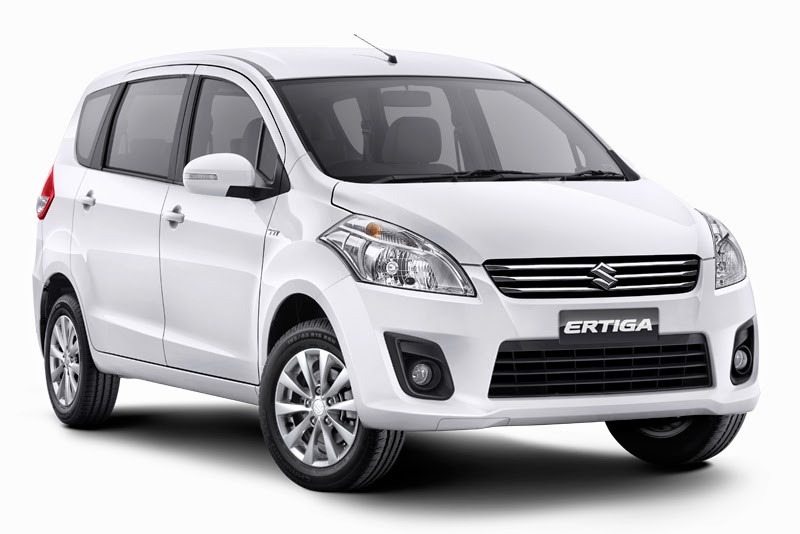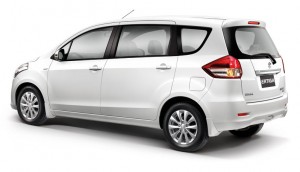
Another year, another initiative from Proton to collaborate with yet another Japanese car brand, this time it’s Suzuki. Collaborations between car brands can be a complex thing, so we’ll try to make it simple for you. We start by looking at the gist of the press release issued by Suzuki (in italics).
Suzuki Motor Corporation (SMC) has agreed to form collaboration with the Malaysian national carmaker Proton Holdings Berhad (PROTON) and signed a Memorandum of Understanding for the collaboration and a License Agreement today.
As the first step of the collaboration, SMC will supply KD components for a model of Suzuki automobile to PROTON. PROTON will manufacture at its own plant, distribute and sell such model under PROTON brand through its sales network in Malaysia. The first model will be a compact passenger car, to be manufactured at the PROTON Tanjung Malim plant from around August 2016. Other additional models will be mutually studied by PROTON and SMC.
Furthermore in future, supply of engines and transmissions by Suzuki to PROTON and installation of such engines and transmissions by PROTON for its own models will be also studied.
What it means: Suzuki and Proton has entered into a legal contract known as a license agreement whereby the licensor (Suzuki) grants the licensee (Proton) rights to produce, apply its own brand and sell the product that is owned by Suzuki. In return, Proton would have to adhere to stipulated conditions and pay Suzuki a royalty fee. As the relationship is consummated, both parties will study the possibility of a deeper tie-up in the future including the supply of Suzuki drive-trains for other Proton models.
 What will happen: The A-segment Suzuki Celerio (previously known as the Alto) is most likely the subject of the license agreement. Since August 2016 is mentioned as the start of production, it will leave Proton and Suzuki little time to make any aesthetic changes to the car (which costs a lot of money and time to do so), so yeah, expect a Proton-badged Celerio soon. In the meantime, the naming contest can start now.
What will happen: The A-segment Suzuki Celerio (previously known as the Alto) is most likely the subject of the license agreement. Since August 2016 is mentioned as the start of production, it will leave Proton and Suzuki little time to make any aesthetic changes to the car (which costs a lot of money and time to do so), so yeah, expect a Proton-badged Celerio soon. In the meantime, the naming contest can start now.
 The Celerio is the most likely candidate due to the fact that it would have had to meet the latest UNECE Regulations as it is currently sold in Europe (and Australia as well). In slightly more than a year’s time, the Perodua Axia will have a worthy 1.0-litre challenger.
The Celerio is the most likely candidate due to the fact that it would have had to meet the latest UNECE Regulations as it is currently sold in Europe (and Australia as well). In slightly more than a year’s time, the Perodua Axia will have a worthy 1.0-litre challenger.
Mr. Osamu Suzuki, Chairman & CEO, said “All this while we have carried out our automobile business in Malaysia on our own. Through the collaboration with PROTON from now on, we would like to develop a comprehensive synergy between the two companies.”
 What it means: Oddly enough, both Suzuki and Proton share something in common – failed relationships with Volkswagen. In Proton’s case, the bride suffered cold feet and backed out in the last minute, while Suzuki is trying to get their “marriage” with Volkswagen annulled after exchanging “vows”, or shareholding if you will, the outcome of which is pending an international court of arbitration. CEO and Chairman of Suzuki, Mr. Osamu Suzuki is no stranger to collaborations, Maruti Suzuki being the best example, and they dominate the Indian market with close to 50% market share. So yeah, Mr. Suzuki is ready to wage a compact car proxy war against Daihatsu (Perodua) in Malaysia. But let’s first see how the Celerio turns out next year, shall we?
What it means: Oddly enough, both Suzuki and Proton share something in common – failed relationships with Volkswagen. In Proton’s case, the bride suffered cold feet and backed out in the last minute, while Suzuki is trying to get their “marriage” with Volkswagen annulled after exchanging “vows”, or shareholding if you will, the outcome of which is pending an international court of arbitration. CEO and Chairman of Suzuki, Mr. Osamu Suzuki is no stranger to collaborations, Maruti Suzuki being the best example, and they dominate the Indian market with close to 50% market share. So yeah, Mr. Suzuki is ready to wage a compact car proxy war against Daihatsu (Perodua) in Malaysia. But let’s first see how the Celerio turns out next year, shall we?

 UPDATE: Countersteer has learnt that the Ertiga MPV (not the Celerio) might well be the first Suzuki model to wear a Proton badge under the licence agreement. The three-row Ertiga is based on the Swift platform but with a lengthened wheelbase and body, and will pose a stiff challenge the likes of the Perodua Alza, Toyota Avanza and even the Nissan Grand Livina. It is expected to be powered by a 1.4-litre petrol engine mated to a four-speed automatic. Sold in India and Indonesia since 2012, the Ertiga has proven to be a hit in those two countries with its compact dimensions, spacious cabin (wheelbase is a 2740mm) and competitive pricing.
UPDATE: Countersteer has learnt that the Ertiga MPV (not the Celerio) might well be the first Suzuki model to wear a Proton badge under the licence agreement. The three-row Ertiga is based on the Swift platform but with a lengthened wheelbase and body, and will pose a stiff challenge the likes of the Perodua Alza, Toyota Avanza and even the Nissan Grand Livina. It is expected to be powered by a 1.4-litre petrol engine mated to a four-speed automatic. Sold in India and Indonesia since 2012, the Ertiga has proven to be a hit in those two countries with its compact dimensions, spacious cabin (wheelbase is a 2740mm) and competitive pricing.
Rumours are also circulating that the relationship between Suzuki and Proton is more far-reaching than earlier predicted with “rationalisation” expected to take place within the next 12 months. If interpreted correctly, this could mean Suzuki ceasing to sell passenger cars in Malaysia and become a partner-cum-shareholder of Proton, not unprecedented as this happened to Daihatsu when Perodua started selling cars (and before that Mitsubishi with Proton). Since Suzuki Malaysia only sold around 4,200 cars in 2014 while Proton shifted well over 100,000 units, this purported “rationalisation” makes good business sense. Unless you’re Ferrari, volume always wins.